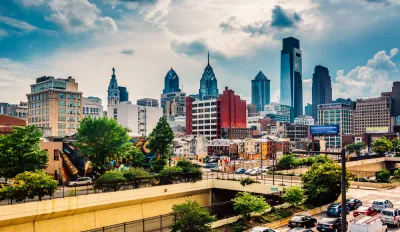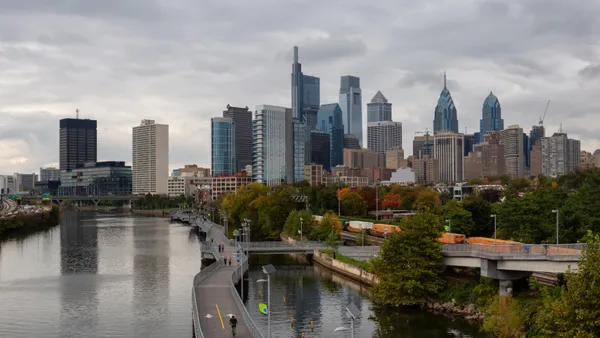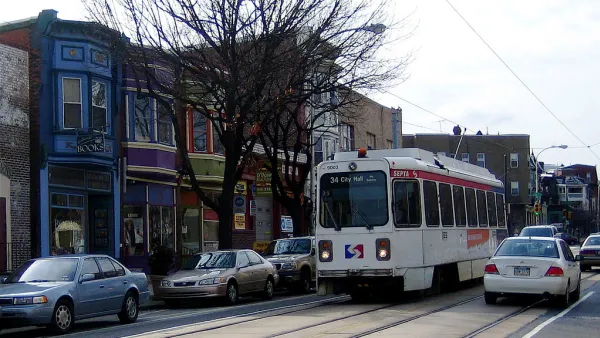The High Line is a famous example of urban revitalization, but a useful commuter path it is not. Can a similar proposal in Philadelphia offer the benefits of beautification and mobility?

Malcom Burnley revisits the idea of a linear park like the one proposed for the Reading Viaduct in Philadelphia as a benefit to the mobility of the city, not just another example of urban beautification similar to the example set by the High Line in New York City.
Burnley tours the proposed route with Michael Garden, boardmember with the Friends of the Rail Park, the driving force behind the proposed project. Before discussing its potential mobility benefits of the park, Brunley provides this summary of the long-term plans for the park:
In Phase 1, the elevated rail line would be repurposed, much like the High Line. In Phase 2, a 1.75-mile stretch of underground tunnels and dug-out space known as the City Branch (or, colloquially in transit circles, as “The Cut”) would be redone into a green corridor with paved throughways that might rival the cool factor of the Schuylkill Banks.
Distinguishing the Viaduct Rail Park proposal from the often-clogged High Line, "Garden envisions both the above-ground and below-ground portions of project as having ample room for bike lanes, running/pedestrian lanes, recreational space and even retail kiosks with coffee (and maybe some of those bougie popsicles)."
Burnley's conclusion after considering Garden's points:
I’d argue that the proposed rail park would not be transformative in the way that, say, stripping parking minimums from the zoning code or creating rapid transit on Roosevelt Boulevard would be. In that sense, maybe it’s a luxury transportation improvement. Nonetheless, it’s one that the city deserves.
The article follows an earlier article by Brunley listing 20 "smart transportation ideas" underway in Philadelphia. At the time, he left the Reading Viaduct off the list. An October study by the Delaware Valley Regional Planning Commission [pdf] concluded the potentially building a bus-only route along the path of the viaduct would be too expensive.
FULL STORY: Reading Viaduct Park Would Make Getting Around Philly Easier

Analysis: Cybertruck Fatality Rate Far Exceeds That of Ford Pinto
The Tesla Cybertruck was recalled seven times last year.

National Parks Layoffs Will Cause Communities to Lose Billions
Thousands of essential park workers were laid off this week, just before the busy spring break season.

Retro-silient?: America’s First “Eco-burb,” The Woodlands Turns 50
A master-planned community north of Houston offers lessons on green infrastructure and resilient design, but falls short of its founder’s lofty affordability and walkability goals.

Test News Post 1
This is a summary

Analysis: Cybertruck Fatality Rate Far Exceeds That of Ford Pinto
The Tesla Cybertruck was recalled seven times last year.

Test News Headline 46
Test for the image on the front page.
Urban Design for Planners 1: Software Tools
This six-course series explores essential urban design concepts using open source software and equips planners with the tools they need to participate fully in the urban design process.
Planning for Universal Design
Learn the tools for implementing Universal Design in planning regulations.
EMC Planning Group, Inc.
Planetizen
Planetizen
Mpact (formerly Rail~Volution)
Great Falls Development Authority, Inc.
HUDs Office of Policy Development and Research
NYU Wagner Graduate School of Public Service




























